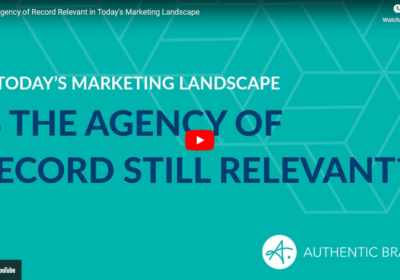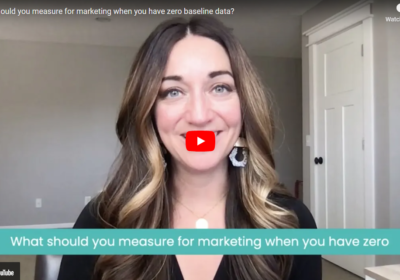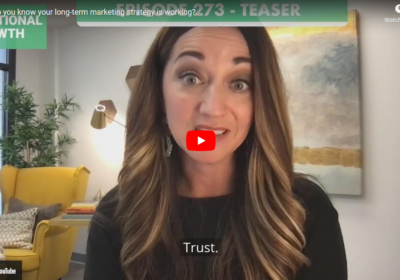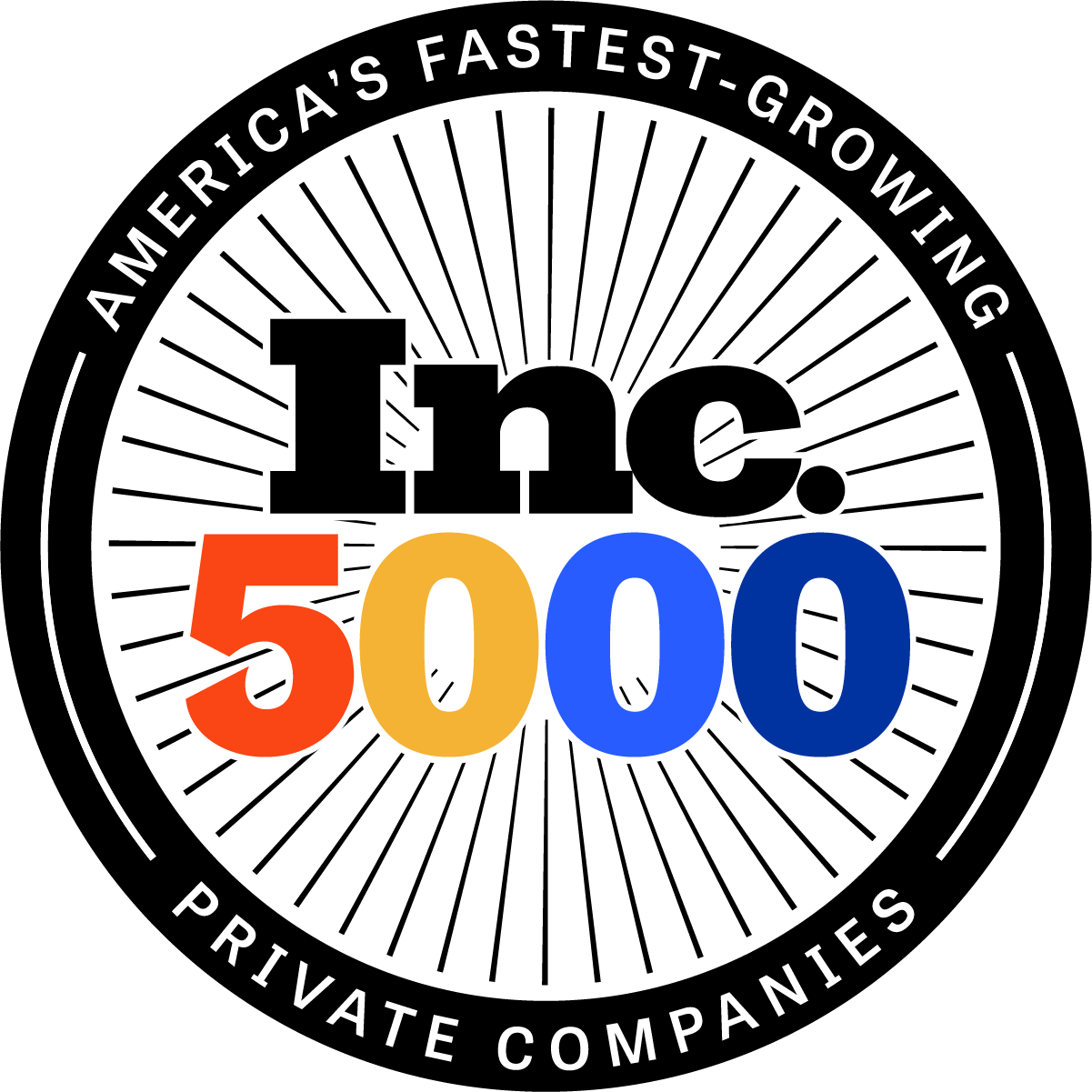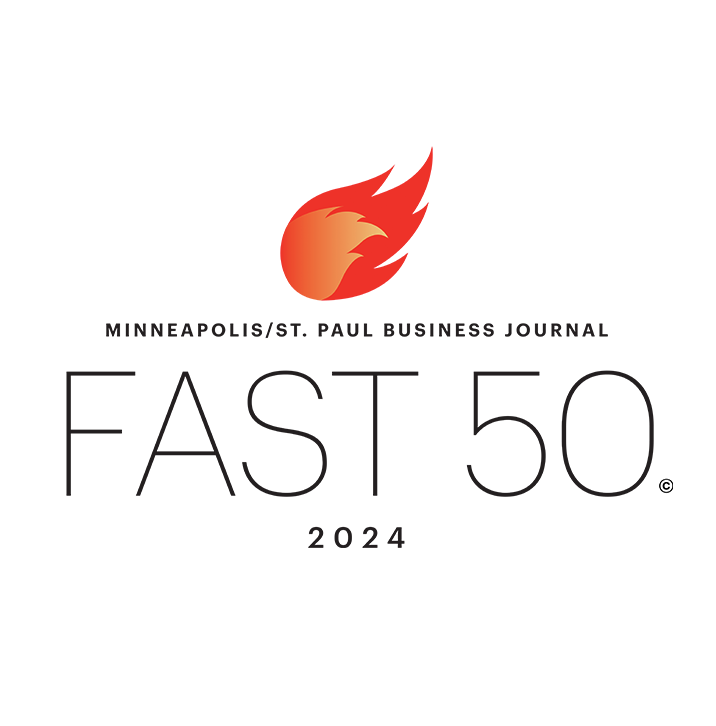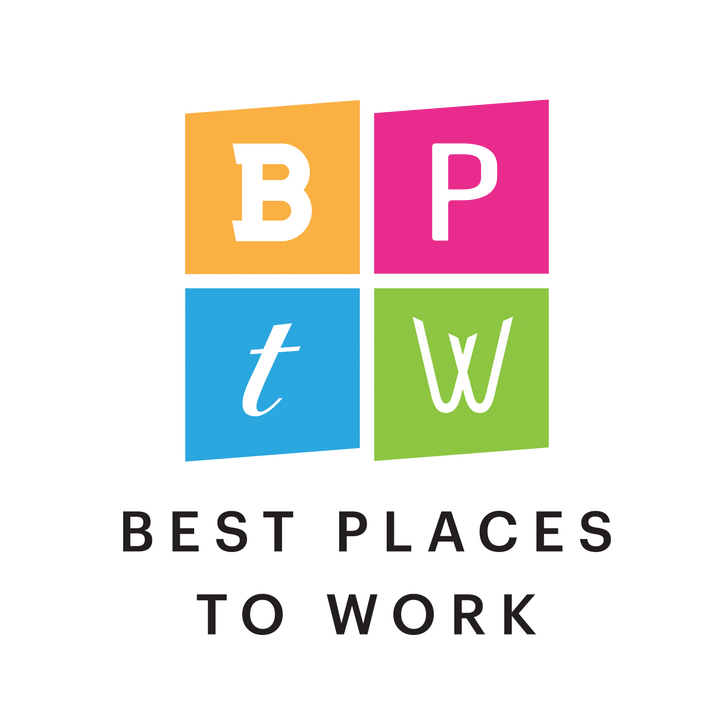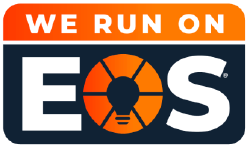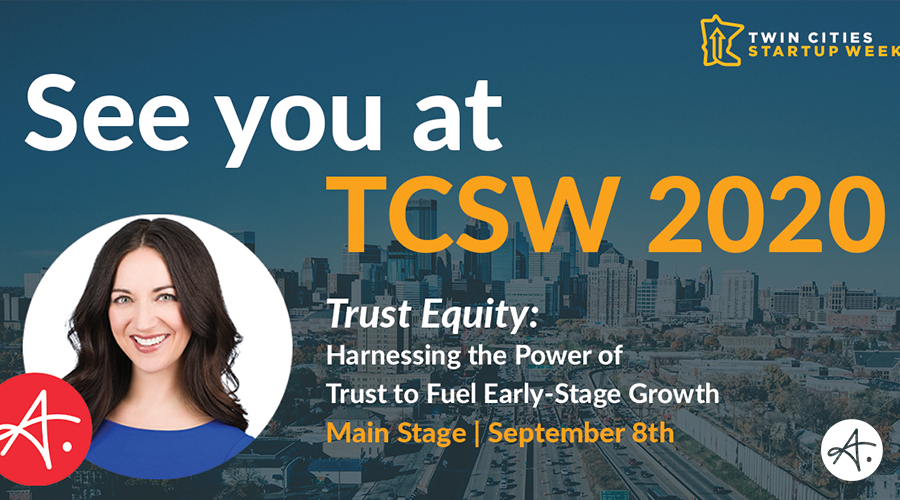
Brands are built, scaled, and sustained based on buyer trust. The value of trust in fueling growth cannot be underestimated. For startups and early-stage businesses (whose brands are essentially unknown), trust-building must be a top priority, cultivated proactively, and re-invested with purpose.
Hear from Jennifer Zick, CEO of Authentic, as she shares a formulaic approach to trust-building; drawing upon her own entrepreneurial and startup growth experiences, and supported by Authentic’s Fractional CMO work with growing companies across the country and around the world.
Video Transcription
Introduction
Hi everybody, this is Jennifer Zick coming to you from the global home based headquarters of Authentic® today. So happy to be with you all for Startup Week and delighted to have this opportunity to open things up with you on the main stage of the marketing track Day one. It’s such a pleasure and an honor to be with all of you here today to share my own entrepreneurial journey and to pull through some of the threads and lessons learned along my career and things I’m still learning as I’m building my business, Authentic.
So I want to start just by introducing myself to you, to those of you who don’t know me. Born and raised in Minnesota and have been a member of this business community for a couple decades now. I live out in Chaska with my husband Ryan. We’ve been married 23 years and have three beautiful children and our golden retriever, Gus. This picture is actually 2 years old now. Our kids this year are in 12th and 9th and 5th grade. So our family is growing up very quickly and I think it’s time for a new family photo.
When I’m not busy with my family, I’m building my business Authentic. So I just want to give you a little context on what I do professionally so that the content I share with you today is more relevant and in context to that experience. So I founded Authentic in March of 2017. So we’re three and a half years old today. What we do is fractional CMO services for growing businesses. We bring marketing leadership to the table that helps them achieve next level growth.
And we lovingly say that we help businesses Overcome Random Acts of Marketing® in order to make marketing a strategic and sales aligned, revenue focused partner in their business growth. So we are a team of 15 and growing passionate about early stage growth businesses and usually working with established businesses on that next level of growth. So our clients are usually the five to $50 million clients and they are across industries and they are across the United States and even around the world as we’re growing. So it’s been an awesome journey and you’ll hear little parts of how that growth has been inspired in the topic I share with you today.
So first off, I want to start by thanking all the Beta Minnesota team members that make this event possible and that have gone above and beyond to bring it to life virtually this year and make sure that this entrepreneurial community stays connected and vibrant and growing even in the midst of such a disruptive year. This is actually my fourth year at Twin Cities Startup Week. These panelists that you see on the screen are three years worth of bringing together entrepreneurs, techpreneurs and entrepreneurial leaders from within Twin Cities brands and businesses. So the past three years I was able to build and moderate awesome panel discussions on business growth, entrepreneurship and sales and marketing. And this year is my first solo presentation at Twin Cities Startup Week.
Contextualizing Trust Equity
So it feels a little odd to just be talking to myself without seeing your faces live right now as I present. But I can’t wait to have some extended time at the end of this presentation for live Q and A. So please jot down your thoughts and questions because I can’t wait to really dialogue with you. So first of all, I want to contextualize the topic for the day, which is Trust equity. I’m not sure if that’s a real phrase or not. It’s one I made up in describing what it is that I want to share with you, but really what it means for today’s purposes is harnessing the power of trust to fuel your early stage business growth.
I really don’t think there’s anything more valuable to a business, its relationships and its brand than the trust that it creates and maintains with all of its stakeholders. That’s just your most valuable brand currency and it does not happen by accident. In fact, today I want to share with you some best practices and even a formula that I have developed based on what I can see now in hindsight as being a successful path in building businesses. And I know that the audience today is really diverse out in the crowd. Today we likely have early stage founders, owners and entrepreneurs, investors, corporate leaders and enterprise level employees who are excited about innovation and startups and being part of maybe someday starting your own business.
Jennifer’s Career Path & Entrepreneurship Journey
So I recognize that this audience is really diverse and comes to the table with a lot of different perspectives and experience levels. Today as I share this topic, I’m speaking really to the heart of a founder and keeping in mind that being a founder doesn’t mean that you have to be an owner in a startup. Part of my story is that I got to be a founding team member of a brand that grew and was a great success story here in the Twin Cities, a company called Magnet360. I’ll share more about my journey there, but I was the first full time employee with the two founder owners and the initial scrappy team that was building at the time a web development company. And were all in our early 20s.
And even though I wasn’t an owner in that story, I spent 13 years in that business as a founding team member wearing a lot of different hats and constantly needing to represent the business in different ways. I think this content I hope will pull from experiences I’ve had as an employee and advocate, a brand builder on behalf of our clients, and as the leader and brand builder of Authentic. I’m trying to thread that all together. So I just invite you to take what is useful from this presentation for you and ignore what’s not useful. It’s rooted and grounded in a lot of my own personal experiences, so they might not fit you perfectly, but I hope there’s at least something that’s inspiring and actionable that you can take away from today’s presentation.
So I invite you to make it your own. I want to start by sharing with you a little bit of background on my personal brand story so you heard me already speak about the 13 years I spent at Magnet360 and when we first started actually the company was called Reside and that was in my early stage career. We were young and we didn’t have networks of influence. We hadn’t established any personal brand trust as leaders. We were all in our 20s, just kind of coming out of our first jobs out of college and wanting to build something meaningful and being really determined. We didn’t have money, connections, experience and all of that clout, but were fearless and we cared deeply and we worked hard and were also lucky and we learned quickly.
And a lot of that experience now helps inform how I approach my entrepreneurial journey with Authentic. And I’m sorry if the image of my face is covering some of the content on my slides. I’ve tried to move things around but I’ll speak to what’s there. So in the early stages of my career I didn’t even really know it. I can see it now in hindsight, but I was establishing credibility in my own personal brand. At the time I was leading sales efforts for this small growing web development business and at that time digital and web was relatively new.
This was 2001 and so most of our network building was done by me being out at every networking event that was in the Twin Cities at the time and shaking hands and trading business cards and being really adamant about follow up and making those follow ups personal and figuring out how I could help other people connect because most of the connections I was making were with other young business emerging leaders and none of us had a lot of decision making authority but we all wanted to help each other and I didn’t know it then because I hadn’t had any Formal coaching that I was planting seeds that later would grow alongside of my career and provide a lot of dividends in advancing my business today. But at the time, I was establishing some early brand credibility.
And then down the road, after I had been with the company for many years, I recognized that as I had shifted from sales and out in the market and customer focused to building the marketing facet of the organization and the marketing team, I had really moved from an external facing, kind of public representation of the brand to an internal team that was promoting the brand and the other executive leaders. And my story became really synonymous with the brand story. And that was what I was doing all day. And as I realized that I was limiting my brand a bit because I no longer had a story about Jennifer Zick. I only had a story about Magma360. And it was a great story.
But when I started thinking about making the change in my career, I realized I needed to reinvent and rebuild my personal brand and make sure that I had credibility apart from the business story. So I went to work to do that. I spent two years really planning my exit and building my story of my own personal brand by joining some nonprofit boards, by taking on leadership roles in my church, by getting More active on LinkedIn and at the time, exploring Twitter for how could I have a voice in the world and winning some awards and doing some of those things, that created a brand story for myself. And that was really valuable when it came time for me to move on from that business.
And after a couple other roles along the way, it was ultimately a job loss that propelled me into launching Authentic. So though I had always nurtured this little seed of entrepreneurship in my heart, I had never decided that there was a specific time that I would launch a business. But when I lost my job in my last corporate role, I was faced with an option to either go get another great job or to build something of my own. And as I looked at my life and the space and time I have left, I knew I didn’t want to live with any regrets. And so I made the decision to start a business and go all in on that and figured that, you know, the worst thing that could happen is that I fail or I don’t like it, right?
And then I’ll get another job. But when I started my business, I really had to start owning my personal brand because I wasn’t representing somebody else’s brand and other leaders. I had to be the leader in my own business. And I have learned even so much more about trust. Equity in starting Authentic that I’m excited to share with you today. And now with Authentic Brand being three and a half years old, we are moving ourselves from an early stage startup to an established growing business that has some credibility. And I’m now at the phase in brand building where I am transferring a lot of the brand equity inside our business, from Jennifer Zick’s founder story to the Authentic community story and all the stakeholders therein.
Building Your Personal Brand
So finding that balance about where my brand helps support our growth and how I as a leader help support our growth without becoming a liability in our business takes a lot of thoughtfulness and I’ll be sharing that with you a little further on as well. So it all begins with building your personal and authentic brand and I want to share some things that I’ve learned along the way. This is going to be a three part model. Just before COVID so early in 2020, which seems like a lifetime ago, I was invited to speak at a couple of executive events. One was for a group of executive financial leaders, so CFOs and some COOs in the crowd were accountants and bankers and the other crowd was a group of women leaders. So there is a very different kind of demographic makeup in the room.
But I came in to speak with them about this concept of personal brand and I wasn’t sure how it would sit, but I started taking the questions I get from people about how do you do what you do, how have you created a brand? And by no means do I consider myself an expert, but since I had been asked the question, I started to put my thoughts onto paper. And with that I initially developed a 22 dimensional model. But by the time I was presenting to the second group, I had expanded to a three dimensional model. And I got so much good feedback from this model. Even though it’s so simple, it really seems to strike at the layers that people are working to sort out and how they show up in the world professionally and personally.
So initially I talked about when I was at Magnet and realized that I had lost touch with my personal brand. My entire story was the story of Magnet360, which was a great story, but I really had a limiting personal brand. My entire brand was represented through my relationships professionally, my social media activity was all about my employer’s brand. And so as I started to think about how to create more dimension around my story, I started thinking in terms of what I’m calling a dimensional personal brand. How and where can I represent my employer’s brand very well and also start representing myself thoughtfully? Of course with good filtering about what’s appropriate in which context and professional and social and personal networks.
But how can I bring forward some of the things that make me from extending out from my employer’s brand, going deeper within my industry and then to related topics and industries that tie into my career and the people that I admire in my professional network and within my business network and my personal network and what are my hobbies and passions and how does that fuel and feed who I am as a professional. So all those things became part of what I started to incorporate into my brand online.
But I think when I really search for like, what has made it work for me is this next layer, which I am calling the authentic personal brand, where it requires another level of risk and transparency to wrap these pieces of content and thinking and conversation socially and with others in your network with your questions, your feelings, struggles, fears, scars and experiences, hopes and dreams and even values and beliefs. And again, this takes a lot of thoughtful discernment rooted in your own personal and professional values and aligned with the brand you’re representing. And I, I share this acknowledging that for those of you who work in highly sensitive or regulated industries, there’s an even higher level of thoughtfulness and nuance that as a representative of those brands and relationships you need to bring to the table.
I personally now have a lot of freedom as the owner of my own business to decide how much of myself I can share with the world. And what I’m finding along the way is that the more I share openly and authentically, the more positive feedback and more genuine connections I’m building with other professionals. And that is really richening and deepening my business community. So I wanted to just preface this whole conversation with a little bit of thinking about personal brand, because I’m going to springboard from this idea of personal brand to how do you build a startup brand and deepen trust equity with really important relationships by starting with your founders personal brand. So this is really kind of a foundation for the broader topic. So I talked about the authentic brand.
What does it mean besides those little bubbles of ideas that you could bring to the world? It really boils down to integrity, transparency and vulnerability. And only you can determine how you show up within these areas. But I think we can all relate in our increasing culture of distrust of information, we can all relate to when we see someone say something real, we know it passes that smell test of authenticity. But we really know it if the way that they show up in the world is consistent over time, they’re not just you know, tailoring their message to the tidal waves of the time. But they show up consistently. And even if you don’t agree with them, people of integrity hold on to their value system. They let you in on it.
And the people that forge strong connections are often those that are vulnerable. They’re approachable, they know, they don’t know it all. They’re humble, right? So all of these things together create authenticity. And it takes some thought about how you decide your voice comes through. So just to dial down a little bit into each of those attributes in terms of integrity and living your values, it’s important that you really are true to yourself. Values help us decide. They help us decide the topics we will and won’t engage in social media versus in live conversations. It helps us understand who we want to be known as and what we want to be known for. If all the activity is stripped away, you know, what is the legacy you leave behind?
So rather than trying to fit any present narrative or positioning, you want to be true to yourself because you can carry that forward in a timeless way. That’s real. Transparency is letting others in, and that can take a lot of shapes. But I want to share with you some examples from my own professional life that have been really eye opening for me as a marketer and a business leader. So it all begins with recognizing imposter syndrome is real. I think the scariest thing I ever did in launching Authentic was to publish and promote the first blog I wrote. And that’s ironic for me as a marketer, because speaking comes naturally to me. Writing comes naturally to me. Promoting comes naturally to me. But what does not come naturally is doing any of those things around myself and my own thoughts.
As a marketer, I’ve been conditioned to promote the brands I represent and the executives within those brands to help us win accolades and awards and tell stories. But as marketers, we don’t often talk about ourselves. But now I went from a marketer to a business owner, and I needed to have a voice in the market. So imposter syndrome. This is just another fun little bubble diagram. Of course, impostor syndrome makes you believe that you know very little compared to all those around you who appear to know so very much. And their content is polished and shiny and smart. But in reality, that person is polished and smart on those topics and another person on another topic. And you are the master of your domain. The experiences and thoughts that you have are relevant and they’re valuable. So.
So you have something unique to bring to the world. Here’s what’s important to realize about impostor syndrome. We need to understand that everybody, even the most experienced executives, tend to feel like a big, huge fake, right? There’s always a little naggling voice in my mind telling me that at some point I’m going to be exposed for not knowing anything. But I just keep putting out to the world what I do know. And the world keeps giving me feedback that at least to somebody, that is valuable. So recognize that you do have something valuable to share and there’s only one you so don’t hold back. And bravery is not the absence of fear, but action in the face of fear. And what is the worst thing that can happen? I mean, let’s be really honest.
Creating Authentic Content
I mean, obviously a super unthoughtful tweet really could lose your job if you really aren’t using emotional intelligence and filtering. However, as you share yourself thoughtfully and you share your experiences thoughtfully and humbly and authentically, what is the worst thing that can happen? Maybe some people who don’t agree with you stop listening to you, but more likely than not, you’re going to attract other really wonderful, authentic people into your world. I want to contrast two kinds of content that I use on social media and the results that I see from this. Because I think too often business leaders believe that the best way to build and promote their brands is to share thought leadership. And I’m a huge proponent of content and thought leadership. I’ve been committed to creating content through Authentic since day one.
And some of that content is now producing some really wonderful organic search engine lead generation and feeding our sales efforts. And it’s great. It’s important stuff. But I’ll tell you that every time I share a piece of content on LinkedIn, I’m lucky if I get 12 likes and maybe 75 views. But when I share an experience, a moment, a celebration, it goes crazy. When I share about the connected community that I’m part of, when I celebrate the lives connected to my business, when we celebrate milestones and achievements like our logo on the wall, that’s when we start to see incredible engagement because we’re speaking to the hearts of real people. And more than ever, people need good news. They need good news.
And if they can see that good news coming from your brand, personally and professionally, they’re going to be drawn to it. You’re going to start building an actual relationship with not just being recognized as a smart organization. So I try to do just as much, if not more recognition of people and celebrations and moments and milestones than I do pushing content and subject matter expertise. Because trust is not just what you know, and it’s not just who you know, it’s what you care about and where your heart is as a leader and as an organization. And so finally, vulnerability is bringing your whole self, and whole is relative. Of course there are parts of my life that just don’t get broadcast all over social media or shared in my monthly email update.
But for what I do share, I want it to be expressive of my whole self. I want personality to come through, I want my strengths and my weaknesses to come through and to be relatable. And last fall I had the opportunity to be part of Coffee and Closers with Michali Bedor, and later today I get to be part of Cocktails and Closers with Mikolai. So it was a perfect example to use here today as part of Startup Week. But I went into that conversation feeling super compelled to be my entire real self. And while the topic was around sales and marketing, we ended up having a conversation that included aspects of family and faith and what is success and so many real and raw moments from my life shared there and I’ve never seen.
I probably received 20 emails or LinkedIn messages specifically from attendees, as well as many conversations with those who were there in the room thanking me for being vulnerable. And these were just a few of the comments that came through my LinkedIn inbox. People who really, even if they don’t agree with the structure of my family or the role I have as a working mom or I doubt there were very many that disagreed with that. But even if they don’t agree with my religious viewpoints, they respected that I own them and I’m willing to share them. I’m willing to put myself into the world. And so again, this isn’t done with any kind of lack of thoughtfulness or empathy for others viewpoints.
Tips for Building Your Personal Brand
I absolutely love and embrace the diversity of our community, but I also want to be true to who I am and really show up as my whole self. And for me that’s been a real valuable lesson in being a business leader is that’s how deep trusting relationships are truly forged. So if you haven’t really thought about your own personal brand as a leader within your business community, there’s a couple things I can share with you that will help you to keep it real, keep it reasonable. So first, just start one person, one interaction at a time. You know, the little simple things that I try to stick with like every meeting that I have, sending a thank you email and expressing why the connection was valuable and appreciated.
Those things build upon themselves over time and it becomes a really important piece of building that fabric of connectivity. And if you’re gonna, if you’re somebody who loves to journal or really kind of put down a plan to paper, these are some questions you can ask yourself that can help you navigate. How will I show up in this space? So first, what is your purpose for building a personal brand? What are you truly passionate about? I remember when I was first experimenting as I was still at Magnet360 about how to expand my dimensional brand beyond just my employer’s brand. I started off by playing with some topics that were related to the work we did in salesforce.com technology. And I started, you know, trying to regularly tweet about the Internet of things and, you know, technical ideas.
And while I enjoyed watching conversations in that space or Bitcoin, it was not what I was passionate about. And it was such a heavy lift. And when I finally embraced that, what I’m passionate about is brand and business growth, sales and marketing alignment, entrepreneurial focus, and all of those things that really fuel me. It became really easy for me to start creating content and bringing my voice to the world. So what are your gifts? How can you help others? We’ll talk more about that. How do you live your values out? How will you and where will you engage or not engage in order to really be true to your values? Where are your communities and what skills or knowledge do you need to be effective in building relationships in the business community that you’re looking to connect within?
Some of you probably need to take a class in LinkedIn and how to find and foster relationships without being spammers. So learn what you need to learn in order to show up authentically as you. So this is just a recap. What kind of personal brand are you building? And I just encourage you, don’t feel overwhelmed if you’re over in the limiting brand and that’s where you are today. Pick one other little bubble from the dimensional brand model and try it out and see what happens and see what you learn and then follow your heart and follow your values and you’re not going to go wrong. So let’s catapult into what I promised you today, which is a formulaic approach to business growth through this transfer of trust idea and trust equity.
Growing Your Business with Trust Equity
So earlier today I just put my thoughts and my experiences and kind of the path I followed onto paper and said, how could I turn this into a Five step approach. So here’s what I’ve got. This is really reflective of how we’ve built this at Authentic and even the same playbook that we used at Magnet360. But we didn’t know we were doing it. We muddled our way through and it took us a lot longer as first time entrepreneurs. But now in building Authentic, I’m able to be more purposeful about moving through these gates for how Authentic grows from zero to hero. And we’re still on our journey. But it all begins with existing relationships, then establishing your brand credibility, expanding your networks of trust, elevating the brand through influence, and then eventually extracting that personal brand out.
So I want to deep dive into each one of these stages and give you a little bit more context and examples of what that might look like in action. So phase one, existing relationships. As a founder or a member of an early stage startup, you come to the table and your brand is unknown. It doesn’t have credibility, it doesn’t have trust. Nobody even may know the name of your business. So it all begins with who do you already know that trusts you personally as the leader or leaders within the organization and then how do you ask or equip them to help you? Okay, so those initial relationships are likely your own team members, your past colleagues and past clients and partners, your friends and family, your immediate network.
Now, some of you have been through the entrepreneurial ropes a couple times over and you’ve got a really rich and established network. And so when you launch into something new, it’s like the world has your back and they know you’re going to be successful and you’ve got all that support. Some of you are early stage entrepreneurs who’ve never been through the cycle of business growth. And I want you to be encouraged today because I’m trying to share with you everything I learned the hard way so that maybe you can be a little more proactive in thinking about how you can more quickly establish networks of trust. So the key in this existing relationship time frame in your business is that you have to be really honest with yourself about your connected levels of influence.
And for me, when I launched Authentic, the four years prior to that, I had been holding roles mostly based out of the Bay Area. I was living in Minnesota, but I was working mostly in the Bay, telecommuting and leading global teams. And so I was quite disconnected for four years from my local network, not because I didn’t care about them, but because those roles were big and pretty overwhelming. And I just didn’t have the capacity to locally network. And so when I decided to start a business here that would initially be a local business with local clients, I was a little bit worried. I was reasonably humble and didn’t know whether my network was going to have my back or remember me or understand what I was trying to do.
But I was really wonderfully surprised that when I announced via LinkedIn that I had hung my own shingle, those relationship seeds that I sowed early in my career when I was establishing my personal brand, the fact that I had, for the most part, as best as I could, done the right thing by people and followed through and kept my promises, that came back to me in spades. And so those networks matter. But you got to be realistic because if you’re early in your career and you’re early as an entrepreneur, you may not have that 15, 20 years of built up network support around you. And you’re going to have to find other pathways through relationships with people who do have those networks of support. Phase two, establishing your brand credibility.
At this point, you have to prove that your business can back up what it claims to exist to do, right? So the question here is, who are we working with that trusts us personally and corporately? So your early customers, your early employees, your early partners. For me, my first clients with Authentic Brand were people I already knew and had often either worked with or worked for. They knew me, they trusted Jennifer Zick, and they believed that whatever I was going to do would be good and that they wanted to be part of helping to launch this business and its success. I mean, you just can’t overvalue those relationships that will be those early adopters. And then the key is that you must deliver on all of your promises, whatever it takes. And I mean the hint on that is that’s true all the time.
Always under promise and over deliver in the world, the bar is set pretty low because a lot of people over promise and under deliver. So if you can be one of the rare people who really follows through on what you say you’re going to do consistently over time, you’re building that brand trust and then you want to leverage these successes. I was so grateful, you know, I never hesitated to ask every single one. And I still don’t hesitate to ask every client of Authentic Brand if we could have permission to use their logo in our marketing if they would provide a testimonial. We captured some really wonderful early video success stories because this credibility is remarketable. That’s how you build trust. Upon trust. Upon trust. Which takes us to phase three, expanding networks of trust.
So this is when you start saying, all right, we have an established and credible thus far business. Our service or our product is now grounded. So who can help us scale? What are existing networks that are already established, that are bigger than ours, that they already have trust with our future buyers? At this point, hopefully you’ve started to do some of that marketing strategy work of identifying your ideal customer profile, understanding what matters to them, how you become part of the solution for them and where it is that they live in the world and how they interact. Maybe they’re all members of an industry association, maybe they all buy services from another tech provider that if you had a partnership with could really propel you.
So networks of trust that expand your business could be those client referrals I talked about and those stories that leverage into their connected networks. It could be through employee advocacy and your employees experience in your business helping to elevate your brand, draw other quality employees and prospects your way and most certainly through some level of potential partnership, whatever that might look like. The key here is to help. First you’ve got to come at these relationships without a self-serving agenda. If what you’re after is only to your benefit, you might as well just stop right now because that’s not how trust is built. You have to create something of value first. And I know you’re a startup and I know your resources are slim, but your creativity is huge. You’re a builder.
So ask yourself what is it that this bigger, more established entity organization doesn’t have that we might be able to provide that would be of service to them, that would help them to trust us and to see our capabilities and therefore be willing to open some doors for us to collaborate and for us to naturally gain some exposure to their world. So this can’t have a forced value exchange, it can’t feel manipulative. You actually really, truly do have to care deeply about the success of anybody that you’re looking to partner with in building trust. I want to give you some examples from Authentic Brand and how we’re putting this into action. So it was year one that I recognized that many of our clients here in the Twin Cities run their business on eos. It’s a business platform called the Entrepreneurial Operating System.
We had used it at Magnet360. I had started using the tools from EOS and building Authentic. So I was really familiar. But I’m not at all affiliated with eos. But I did recognize that this community of Minneapolis companies is pretty deeply connected with eos. And the EOS network overlaps. They often serve the same size and type of businesses that we serve. So there was that natural overlap, and they had a much more established network of businesses. And their clients are executives, just like ours. So I started to ask myself, how on earth would I create something of value for that community? And as it turned out, I knew most of the EOS consultants and implementers in the Twin Cities. And so I began with a simple strategy. I knew that every one of these implementers hosts their clients quarterly meetings.
Many of them have their own office and big quarterly conference centers, but many of them don’t and they rent space. And so we had just built out a big, beautiful conference room as part of our office. And so the first thing I did to help first was to send an invitation to all of those implementers to use our space for free whenever they wanted. And what that does for us is bring those influencers, potential referral partners, and their clients who are someday potential buyers, into our environment where we can give them a great authentic brand experience without pitching anything, without even having to tell our story. It just connects our brand with a positive experience and with something we can give. So that was our first step in expanding that network of trust. Phase four Elevating brand through influence.
Scaling Our Trusted Networks
So the question here is, how can we scale our trusted networks now that they’re established? Right, so at this point, you’re looking for those seeds that you’ve planted and the things that you’ve given. Now you’re looking for ways to harvest those seeds through hopefully cultivating third party referrals, expanded and larger partnerships, you know, not just regional, but national or strategic collaborations. Hey, you know, now we’ve given this value to you. What would you say about us partnering together to create a piece of content and we both contribute and we both put some budget in on it? Right? That’s the elevation component. The key here is that you have to be very careful not to lose track of your actual business objectives as you start developing circles of extended trust.
Others will have their own business objectives and ideas for how you could help them. And that’s awesome. But not every good idea is one that is going to propel both your business and theirs. So you need to focus on those ideas that help others and advance your business vision and then be prepared to say, no, this isn’t a fit. Your focus is only going to lead you into deeper levels of trust because you know yourself well and you have a focus and you know what is going to serve your communities of influence best? Well, let me give an example. Let me back up. So an example of elevating this brand through influence.
So as a next step, after sharing our conference space with EOS implementers locally and their clients, which was a lovely experience, we thought, how do we start to create more connective tissue in this community? Early this year, we had started to make plans to host an event at our office that would bring together some of the executive leaders of businesses that are powered by eos. And it wasn’t a marketing event. It had nothing to do with Authentic Brand and pitching them our services. It was simply being a host to bring those brands together so they could meet one another, learn from each other’s shared experiences. And again, our brand, by way of being host and coordinator, would be attached to something of value in that community of influence. And we had everything set up for a great kickoff in April of 2020.
And you can imagine what happened. Covid absolutely smashed that plan. But after we caught our breath a little bit, rather than being completely defeated, we decided, okay, well, we were delayed but not deterred. We’re going to move this forward and move it to digital. And I have to admit that I’ve used Zoom for many years for meetings, but never for webinars or large group meetings. So it was a really fast learning curve for us. We set up a large group Zoom meeting and evangelized it just through the 20-30 people in our local network. And before we knew it, we had over 100 EOS leaders registered from all around the country. For those of you who know eos, this is the integrator community exclusively for the integrators in those businesses.
And so we suddenly had expanded and elevated our brand through local influence that connected to further influence, circles further out, because the something of value we had created was relevant beyond just this local connection. And so we’ve now hosted, we’re coming up on our fifth monthly event for Integrator Community. And we’ve had hundreds of EOS leaders, again, people who could potentially be customers of ours at some point, attending from all across the states and even from seven countries around the world. So those seeds of trust expanded into higher value. Opportunities that then grow through circles of trust are what elevates a brand. So phase five, though, this is something I’ve been thinking about from the beginning, and I encourage you to do the same.
We’re definitely at the point in Authentic where the brand story and the trust equity in the business can’t just live with Jennifer Zick, it has to live with Authentic. All of our CMOs, all of our team members, all of our stakeholders connected to the business. That’s where trust needs to live. And as much as I absolutely love my role in the business, there may come a day when I want to step further back or put somebody else into the CEO seat or sell the business or exit somehow. So I’m asking myself now, how do I do the right things with my personal brand now to help build and support the business without becoming a liability? And how might I exit the business someday or exit my current role without damaging the corporate brand?
So some of the important things to think about here is how do you begin early on through steps one through four to elevate other voices in your business, other thought leaders. You have to make your customers, employees and partners the story heroes. If you’re the brand story hero, that’s great. If what you want is a small boutique lifestyle brand or what you want is to be an author and keynote style speaker, independent, with some support around you, great. Be the hero, be the voice and the face forever. But if you’re like me, building a business and you want the value to stay with that business, with or without you have got to elevate other voices in the business and start early. So the key here is to start with the end in mind.
Decide early on as best as you can what you want from your business, how you can be an asset and not a liability. Where’s the point where you become a liability? So plan ahead so that your personal brand doesn’t get in the way of your bigger vision and become a limiting factor. All right, we’re getting down toward the end. Thank you for sticking with me thus far. I want to just kind of wrap up with this idea of the multiplier effect, trust, equity and influence. So I’ve shared our story of just one example of what we’re doing to build circles of trust that expand outward in a ripple effect into their connected circles of trust and influence. And then eventually your brand and you as branded leader, become influential if you weren’t already when you started. And that influence can accelerate your growth.
So if you haven’t really started building circles of influence, here’s a little formula for how you can think about getting started. It begins where we started today, with sharing your authentic personal brand. And you might need to do a little soul searching to even figure out what that is and experimentation. And that’s okay. This doesn’t have to be fast, but I do encourage you to make it formulaic and purposeful. So share your authentic personal brand. Be clear with yourself and with others what you’re trying to achieve, short and long term. Identify those who can help get you there, even if they’re people that you don’t know yet. Figure out how you help them by creating something of value. And then this seems simple. But people fall down on this all the time. Do what you say you’re going to do every single time.
Finally, leverage the influence of your brand or your own personal circles of influence to propel you into the next circle of trust. Not in a way that’s self-serving, not in a way that’s manipulative, but in a way that you can help more people serve more people. And good things happen because you’re doing the right thing. And finally, and importantly, as a wrapper over all of this, you have to care. You can’t lose sight of the big picture and the fact that at every touch point and interaction there’s a real human being or many human beings that represent relationships and their own perceptions of you and your business. So treat people well. Care about people, care about their success. Be a champion for their success and they will bring you up with them. That’s all I have for you today.
I sure hope it’s been hopeful that there’s some kind of nugget in there that is actionable or inspiring for you. I would love to connect with you and stay connected with you. You can find me via email, you can find me on LinkedIn. I have a Twitter account but I’m not using it very frequently. So if you tweet me, please don’t be afraid or don’t be surprised if you don’t hear from me for quite a while. And you can check out Authentic Brand online as well. I’m going to stay around for some more conversation and some more Q and A. So bring your questions. I’m excited to connect with you. Thank you so much.

